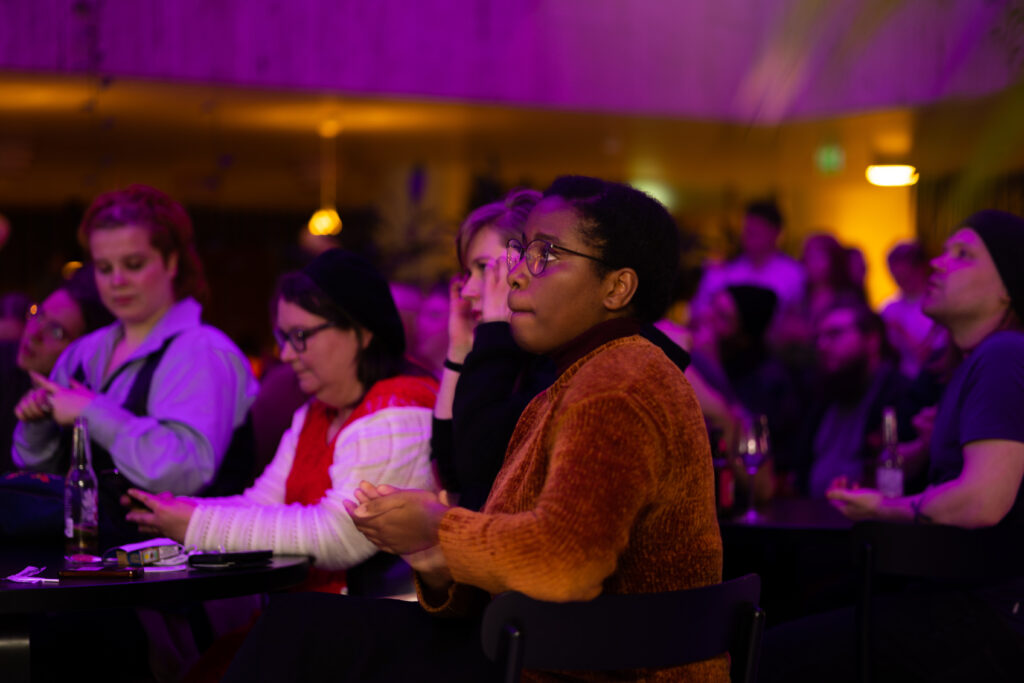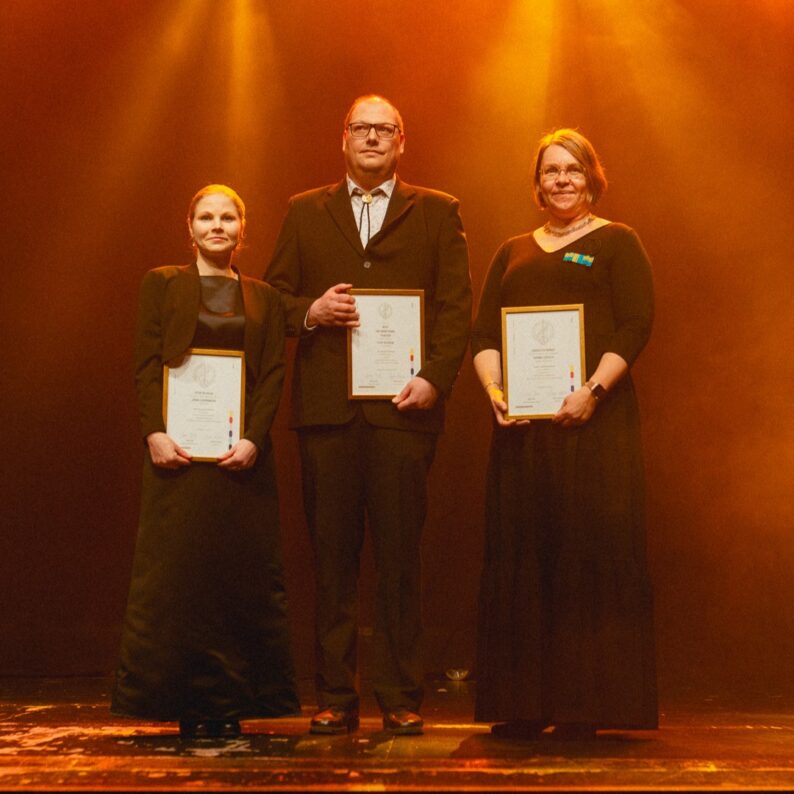


HYY’s Representative Council election result – Maailmanpyörä the largest alliance with 23 seats
NEWS
Voting in the Representative Council elections of the Student Union of the University of Helsinki (HYY) ended at 8 pm today, 2 November. Voter turnout in the elections was 32.32%, whereas the turnout in the previous elections in 2020 was 32.74%. Voting in the elections was open 26–28 October and 31 October–2 November.
While the 2020 elections had to be held remotely due to the coronavirus, the electoral coalitions and candidates were now able to return to campuses to conduct their campaigns. HYY’s traditional election events – the election panel and the election night party – were also organised as physical events once more.
Voter turnout in the elections was 32.32%, nearly the same as the 32.74% of the previous elections. The turnout was highest in the Swedish School of Social Science: 54%. Looking at voter turnout according to the year in which students started their studies, the most active voters were found among second-year students, as voter turnout among students who started in 2021 was 38.92%.
‘The last polling day saw a huge upturn in voting activity, driving voter turnout to almost the same level as in the previous elections. Huge thanks to all voters, candidates and electoral coalitions on HYY’s behalf’, HYY’s Secretary General Mikko Kymäläinen says.
Maailmanpyörä emerges as the largest alliance with 23 seats
Even though the elections and Representative Council activities are fundamentally political in nature, the electoral coalitions are still colloquially divided into political and independent groups. Political, in this categorisation, refers to coalitions that can be connected to a specific political party or ideology, whereas independent coalitions typically have a background with certain disciplines, subject organisations or faculties.
Maailmanpyörä remained the largest electoral alliance, increasing its number of seats from 20 to 23. Within it, the Independent Left (SitVas) achieved the biggest increase in seats out of all electoral coalitions in the elections: an increase of four seats, from nine to thirteen. HYY’s Greens lost two seats, falling from ten to eight. The Social Democratic Students’ Association (OSY), on the other hand, doubled its number of seats from one to two.
HYAL, an electoral alliance with a background with subject organisations, was the second-largest alliance, retaining its 12 seats.
HELP, an alliance formed by subject organisations from veterinary medicine, pharmacy, dentistry, medicine and law, fell to third place among electoral alliances after losing two seats, dropping from twelve to ten.
The electoral alliance formed by the electoral coalition of Finnish-language student nations, Osakuntalaiset, and that of Swedish-language nations and organisations, Svenska Nationer och Ämnesföreningar (SNÄf), kept its nine seats. The coalitions within the alliance, Osakunnat and SNÄf, also retained the number of seats they had, 4 and 5, respectively.
Edistykselliset, the electoral alliance formed by the National Coalition Party and Centre Students Finland’s Keskeiset, lost one seat, dropping from seven to six. The seat was lost by the National Coalition Party, which fell from six to five seats. Keskeiset retained their one seat.
The division of seats between political and independent groups evened out slightly: on the 2020–2022 council, political groups had 27 seats and independent groups had 33, whereas on the new, 2022–2024 council, political groups have 29 seats and independent groups have 31.
Jenny Kasongo from SitVas the top vote-puller with 175 votes
Jenny Kasongo from SitVas emerged as the top vote-puller with a clear margin, amassing 175 votes. This year, Kasongo has been in charge of social policy on HYY’s Board.
HYAL’s Anniina Koutonen received the second-most votes, 125, whereas the 105 votes of Helmi Rihko, also from HYAL, made her the third-most popular candidate among voters.
Number of candidates continues to drop
The number of candidates decreased again. The number of candidates in this year’s elections was 417. The 2020 elections had a total of 490 candidates, which also constitutes a clear decrease from the 591 candidates of the 2018 elections.
The lack of a candidate matcher made voting decisions tougher
The candidate matcher of the Representative Council elections featured extensive and critical flaws that could not be fixed. In previous elections, the candidate matcher has played a particularly important role helping our members with their voting decision, and the lack of a candidate matcher made it more difficult to find a suitable candidate. In the 2020 Representative Council elections, for instance, around one fourth of those who voted reported having found their candidate through the candidate matcher. Further information about the issues with the candidate matcher is provided in this article.
‘It is great to see that voter turnout remained at almost the same level as in the previous elections despite the difficult and unfortunate situation. We will be cooperating closely with the other student unions and the National Union of University Students in Finland to ensure that a reliable, high-quality candidate matcher is available for voters in the next Representative Council elections’, Kymäläinen describes the situation.
Results of HYY’s Representative Council elections
Changes in the number of seats compared to the previous elections are shown in parentheses.
Maailmanpyörä: 23 (+3)
– HYYn Vihreät – De Gröna vid HUS – Helsinki University Greens: 8 (-2)
– Sitoutumaton Vasemmisto – Obunden Vänster – Independent Left: 13 (+4)
– Opiskelijoiden sosialidemokraattinen yhdistys: 2 (+1)
HYAL: 12 (+-0)
HELP: 10 (-2)
Osakunnat & Svenska Nationer och Ämnesföreningar: 9 (+-0)
– Osakunnat 1 & 2: 4 (+-0)
– Svenska Nationer och Ämnesföreningar: 5 (+-0)
Edistykselliset: 6 (-1)
– Kokoomus: 5 (-1)
– Keskeiset: 1 (+-0)
The new Representative Council will begin its work with training sessions next week. There are two more council meetings held this year, the first one on 1 December and the second on 13 December.
The Representative Council elections are held to elect the Student Union’s highest decision-making body, the 60-member Representative Council. All HYY’s members, around 26,000 students of the University of Helsinki, are eligible to vote in the elections. The Representative Council has the highest decision-making power in HYY, making decisions on matters such as the Student Union’s nearly four-million-euro budget, its major policies related to the University, society and the organisations operating under the Student Union, and the business direction of the company owned by the Student Union, Ylva. In addition to this, the Representative Council appoints HYY’s Board and chairs as well as the student members of the Board of the University of Helsinki. The elections are held every second year.
In case you want a closer look, the election result in full as well as the results of previous elections are available at vaalitulos.hyy.fi.
Further information:
Mikko Kymäläinen
HYY’s secretary general
040 081 6426



